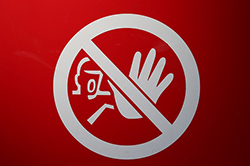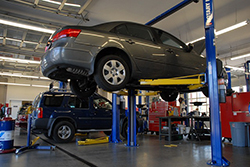 In almost every company, you can find at least one employee who displays a bad attitude. Negative attitudes can poison the entire workplace, though, and decrease morale, motivation, creativity, decision making and productivity. In 2014, the National Labor Relations Board (NLRB) ruled that a Boiling Springs, South Carolina, restaurant owner could fire an employee who complained to customers about the company and its policies. Based on this ruling, your company can take several steps as you address negative employee attitudes, maintain a positive workplace environment and protect your company’s future.
In almost every company, you can find at least one employee who displays a bad attitude. Negative attitudes can poison the entire workplace, though, and decrease morale, motivation, creativity, decision making and productivity. In 2014, the National Labor Relations Board (NLRB) ruled that a Boiling Springs, South Carolina, restaurant owner could fire an employee who complained to customers about the company and its policies. Based on this ruling, your company can take several steps as you address negative employee attitudes, maintain a positive workplace environment and protect your company’s future.
Focus on Business Disruption
You may wish to ban negative behavior because it affects your company’s reputation. However, keep the bigger picture in mind. An employee’s negative attitude can affect morale and productivity throughout the company, cause you to lose key employees and turn away customers. You could lose income and jeopardize your company, and that business disruption gives you a legitimate reason to ban negative behavior.
Track on Behavior Not Attitude
Attitudes are difficult to measure or discipline. You can measure behavior, though, which allows you to track how the employee affects your company and then take disciplinary steps.
Write a Clear Behavior Policy
To use behavior as a reason for discipline or termination, your employee handbook must include clear language that outlines the exact behavior you will allow. Consider this example. “Our behavior standard requires all employees to maintain a positive work environment through their actions and behavior toward co-workers, management and customers.”
In this example, you focus on teamwork and address your employee’s overall attitude and mindset toward their job and the people with whom and for whom they work.
Record Specific Problems With the Negative Behavior
Be specific when addressing behavior problems. For instance, did the employee’s behavior halt progress on a project, disrupt a co-worker’s day or cause a customer to leave the store?
Document Negative Behavior
Always document negative employee behavior in case you need to discipline or terminate the employee. Include details such as who, what, where, when and how.
Screen Potential Employees
As you consider potential employees, screen their attitudes and behaviors. Discern how candidates talk about former employers, co-workers and clients as well as how they respond to you and other team members they meet. Their overall disposition, mood and emotion during the interview can indicate how they will act after they join your company.
Consult Your Attorney and Insurance Agent
While you can include behavior in your employee handbook, be sure your policy meets labor laws and can withstand unlawful termination suits. Your attorney and insurance agent can help you create a policy that protects both your and your employees’ rights as you ban negative attitudes from your company.

 Established in 1990, the Americans With Disabilities Act (ADA) protects disabled Americans from discrimination. The term “disabled” applies to anyone with a physical or mental impairment that significantly limits or restricts a daily life activity, and ADA laws apply in the workplace and nearly any public space. Learn more about how your small business can comply with ADA laws, protect your
Established in 1990, the Americans With Disabilities Act (ADA) protects disabled Americans from discrimination. The term “disabled” applies to anyone with a physical or mental impairment that significantly limits or restricts a daily life activity, and ADA laws apply in the workplace and nearly any public space. Learn more about how your small business can comply with ADA laws, protect your  This spring, add fleet maintenance to your list of chores. The right maintenance prepares your business vehicles to operate safely during the busy spring and summer months. Plus, these tips remove remnants of winter weather and prolong the life of your valuable fleet.
This spring, add fleet maintenance to your list of chores. The right maintenance prepares your business vehicles to operate safely during the busy spring and summer months. Plus, these tips remove remnants of winter weather and prolong the life of your valuable fleet. Now that tax season has arrived, your business must address several common risks. Protect your company now and into the future when you take several steps.
Now that tax season has arrived, your business must address several common risks. Protect your company now and into the future when you take several steps. Completing your payroll in-house allows your company to save money. However, mistakes could increase your liability and jeopardize your business.
Completing your payroll in-house allows your company to save money. However, mistakes could increase your liability and jeopardize your business. Inclement weather, high winds and cold temperatures can wreak havoc on your business property and disrupt operations during the winter months.
Inclement weather, high winds and cold temperatures can wreak havoc on your business property and disrupt operations during the winter months. Small business tax return mistakes can vary from simple math miscalculations to huge deduction errors. While the tax preparer you hire will have liability insurance that covers his or her part in any filing mistakes, you must take several steps to correct the mistake and prevent your liability, too.
Small business tax return mistakes can vary from simple math miscalculations to huge deduction errors. While the tax preparer you hire will have liability insurance that covers his or her part in any filing mistakes, you must take several steps to correct the mistake and prevent your liability, too. Your commercial insurance policies protect your business, making your insurance agent an essential resource for your company. While you may not have your agent on speed dial, you will want to contact him or her in several circumstances.
Your commercial insurance policies protect your business, making your insurance agent an essential resource for your company. While you may not have your agent on speed dial, you will want to contact him or her in several circumstances. Workers’ Compensation covers medical and other expenses if you suffer an injury or illness from work-related activities. You may wonder, though, if you can file a claim if you’re injured during your commute, especially if you carpool with co-workers or run errands for your boss on the way to work. Here are some guidelines to help you answer this question.
Workers’ Compensation covers medical and other expenses if you suffer an injury or illness from work-related activities. You may wonder, though, if you can file a claim if you’re injured during your commute, especially if you carpool with co-workers or run errands for your boss on the way to work. Here are some guidelines to help you answer this question. Whether you stand all day, operate heavy machinery or handle chemicals, you need to protect your feet as you work. Several foot safety tips reduce injuries and help you maintain a safe work environment.
Whether you stand all day, operate heavy machinery or handle chemicals, you need to protect your feet as you work. Several foot safety tips reduce injuries and help you maintain a safe work environment.



